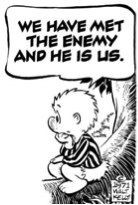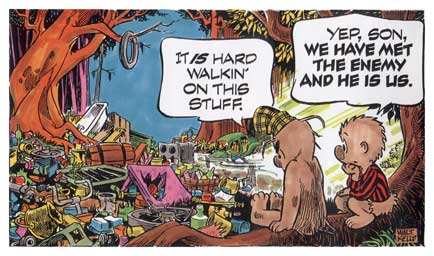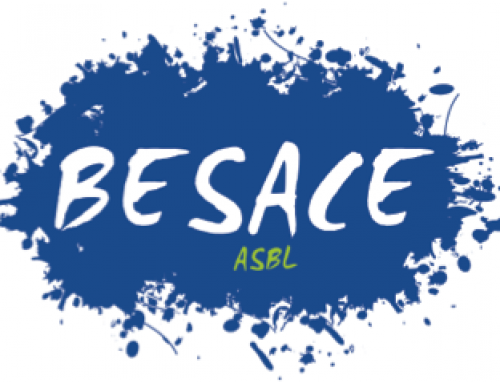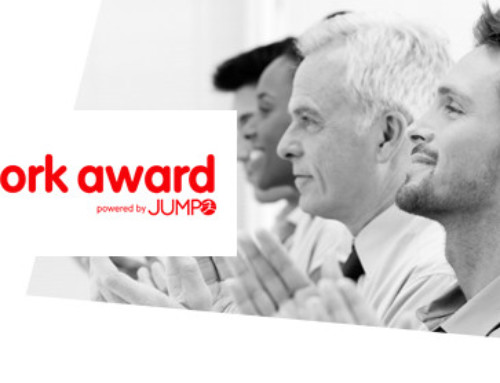Let us embark on a journey during which we will both grow
“Most men and women go through their lives using no more than a fraction—usually a rather small fraction—of the potentialities within them. The reservoir of unused human talent and energy is vast, and learning to tap that reservoir more effectively is one of the exciting tasks ahead for humankind. Among the untapped capabilities are leadership gifts…
We can do better. Much, much better.”
John Gardner, On Leadership
“Yes is a world & in this world of yes live (skillfully curled) all worlds”
E. E. Cummings « love is a place »
« Don’t be afraid of others, they are like us »
Anonymous
“Stop thinking the world into pieces and start thinking it together again.”
Parker J. Palmer
« You must be the change you wish to see in the world. »
Mahatma Gandhi
TABLE OF CONTENTS

CHAPTER 1. THEORETICAL REFERENCES, READING, TRAINING AND EXPERIENCE
1.1. MY BASIC UNDERSTANDING OF WHAT COACHING IS
1.1.1. What is coaching?
1.1.2. Coaching focuses on future possibilities, not mistakes
1.1.3. Internal obstacles are often more daunting than the external ones
1.1.4. Developing new skills and competences: change
1.1.5. Setting precise goals and KPIs
1.1.6. Predominance of the Coachee or the Organization
1.1.7. Open questions only or… also some advice?
1.2. YOPTIONS AND THE INVENTED REALITY
1.3. “MÉTHODE ARC-EN-CIEL” AND THE DISC
1.4. APPRECIATIVE INQUIRY
1.5. EMOTIONAL INTELLIGENCE
1.6. HUMOR AND LAUGHTER
* *
*
CHAPTER 1. THEORETICAL REFERENCES, READING, TRAINING AND EXPERIENCE
1.1. MY BASIC UNDERSTANDING OF WHAT COACHING IS
1.1.1. What is coaching?
The first book I read on coaching was John Whitmore’s[1] which outlined the GROW (Goal Reality Options Will) theoretical model, and provided a pragmatic and sequential guide for holding a coaching session.
There is not a coaching session during which I do not rely in one way or another on the GROW approach, which is, from my perspective, perfectly summarized this way: “(Business) Coaching is unlocking people’s potential to maximize their own performance”[2] ; this directly matches my YOPTIONS belief[3].
The International Coach Federation (“ICF”) definition of coaching also comes close to this: “The ICF defines coaching as partnering with clients in a thought-provoking and creative process that inspires them to maximize their personal and professional potential.” [4] whereas the Société française de coaching[5] insists on revealing the potential of the Coachees: “Le coaching professionnel est l’accompagnement de personnes ou d’équipes pour le développement de leurs potentiels et de leurs savoir-faire dans le cadre d’objectifs professionnels.”[6]
We thus embark on a “human or psychological performance improvement”[7] journey that I would rather rename “a personal and professional performance improvement journey”.
As we both learn from each other and coaching always implies an interaction between the coach and the coachee, I consider that we both embark on a journey, in which we grow together.
I also want to refer to the definition that arose in my group from Jean-Paul Minet’s facilitating workshop during the introductory seminar of the EMBC on 8 October 2011: « Coaching is a specific, limited and ecological accompanying process in a well defined framework. Its aims are twofold: 1) goal achievement and 2) autonomy of the coachee. It achieves these results by facilitating the emergence of hidden resources of the coachee, in his different transitional states and adaptative moves. It requires 3 basic skills: 1) Active listening 2) Benevolence 3) Analysis.”
I found particularly enlightening the summary by Yves Richez[8] of the 4 basic elements of coaching with the coach as being:
- Second, following the coachee and therefore not being first; and
- Related, with relationships occurring between the coach and the coachee; and
- Moving, with a direction and orientation and for a certain distance; and
- Transitional, related to an event or a situation at a given time: coaching is limited in time – temporary and occasional.
And this summarizes how I usually proceed during a coaching process[9]:
Formulated negatively and somewhat amusingly or ironically, here is a definition of coaching that is just the opposite of my own: “Coaching aims at imposing someone’s ideas (the Coach’s) on other individuals (the Coachees) within a mandatory relationship based on authority and with the certainty that everything that is said will be directly reported to higher level executives and the HR department. This revelation may, of course, lead to dismissal”.
These are the key teachings of J. Whitmore that I most often apply:
1.1.2. Coaching focuses on future possibilities, not mistakes
Contrary to psychological therapies, I do not consider that spending several sessions on past events, traumas that can be traced back to childhood, or mistakes made by the coachee in his interactions is appropriate for business coaching. When problems need to be scrutinized, it is always with the objective of getting the coachee back on track for performance, personal and professional development and comfort in his role in the enterprise.
This is also why I often refer to the Gallup book establishing the strength-based approach[10] and suggest that a coachee takes the “Clifton Strengths Finder” test[11]. This test proves extremely useful in unfolding that coachee’s potential that later often refers to the findings on which we built during the coaching sessions.
However, I would clearly refer coachees to psychologists in cases where it appears that mental illnesses or serious depressive states are part of the problem.
1.1.3. Internal obstacles are often more daunting than the external ones
Coming from sports coaching, John Whitmore – citing Timothy Gallwey[12] – would sum it up as: “(…) the opponent within one’s own head is more formidable than the one on the other side of the net”[13].
He refers to this cartoon as picturing this concept :  [14]
[14]
How can this “inside” enemy be fought?
Besides J. Whitmore[15], I specifically refer to the teachings of positive psychology, appreciative inquiry and strength management for developing self-confidence and subjective well-being[16].
I just started sharing Martin Seligman’s teachings on learned optimism[17] with my coachees and plan to further adopt similar techniques of self building and, in particular, that “Pessimists use internal, stable and global explanations for bad events and external, unstable and specific explanations for good ones. They tend to appraise bad events in terms of personal failure whereas Optimists just do the opposite”.
1.1.4. Developing new skills and competences: change
My business coaching sessions have always involved assisting the Coachee in acquiring new skills and competences or developing those that are considered under-developed and needed for the company.
This necessarily implies a change: leaving a well-known situation (one’s comfort zone) and moving into the unknown.
Motivation is therefore paramount, as is having the opportunity to explore new ground and gain access to new ‘territories’. This role of coaching is underlined by the Fédération Francophone des coachs professionnels[18]: “Le coaching est un processus d’accompagnement qui favorise la prise de conscience par une personne (ou un groupe/équipe) de ses modes de fonctionnement, avec l’objectif de dépasser la situation dans laquelle elle se trouve et d’atteindre les objectifs professionnels et/ou personnels qu’elle s’est fixés en toute autonomie.
Le coaching est tourné vers la motivation, le potentiel, et les ressources propres à chacun.
Il s’appuie sur les valeurs et le talent de l’individu.
Le coaching permet de se « développer » dans une dynamique du « Comment » réaliser un projet.”[19]
This reminds me of a saying attributed to Jacques Boël, Managing Director of the Gustave Boël factories and of Glaces de Charleroi, Ciments d’Obourg and Union Financière Boël: “When one of my workers/executives/associates makes a mistake, I congratulate him the first time. This proves that he has engaged in a development process that requires acquiring new skills and expertise. Should he make the same mistake again, I warn him. I fire him after the third same mistake”.
As Obama puts it, and as we were reminded during the opening session of the EMBC: “Yes, we can”.
And here is what I apply from Héloïse Cloet and her seminar on 20–21 October 2011 (“Etat des lieux sur le coaching”)[20] and her article “Cartographie de la valeur ajoutée” [21]:
1.1.5. Setting precise goals and KPIs
On H. Cloet’s first axis, I clearly position myself on the right end with clear SMARTEC[22] objectives and KPIs (Key Performance Indicators) that are defined with the Coachee and the N+1 before the coaching starts, and finally evaluated at the end of the round of coaching sessions (usually 4 sessions of 2 hours each).
|
Axis 1 |
||
| Overall, generic, unspecified goal. Hard to measure results. |  |
Aimed at attaining measurable and visible results that are defined beforehand. |
This satisfies the requests of the companies I am working for and the coachees by providing both clear objectives and evaluation elements to assess the R.O.I., and also fits well into the business language and culture, as perfectly summarized by H. Cloët in her seminar[23]: “Recherche d’objectifs précis et évaluables, définis contractuellement a priori cf méthode Smart. Visée = nouvelle représentation et surtout nouveaux comportements. Préoccupation des entreprises. Volonté de ROI de la part des financeurs. Evaluation du coaching = préoccupation contemporaine.”[24]
Setting objectives and KPIs also helps me address the demand as to when and how we will be able to measure our progress on the path to its solution/development.
1.1.6. Predominance of the Coachee or the Organization
As to the second Axis isolated by Cloët (2011)[25]:
|
Axis 2 |
||
| Predominance of the Coachee |  |
Predominance of the Organization |
I strictly respect the threefold coaching agreement that provides, in my practice, for SMARTEC objectives, KPIs and reviews.
This represents the basics of my commitment to the company and I would never allow myself not to strive with the coachee to fulfill those obligations upon which we have agreed.
However, I allow the coachee to freely comment on the private aspects of his life, and initiate and follow introspective and analytical journeys in his private life as I adopt a holistic view of coaching and the coachee.
One cannot build brick walls between the different dimensions of one’s life (different work environments, challenges and relationships and home, family, spouse, kids, friends, leisure, holidays, …) and a human being cannot separate his thoughts from his emotions and behavior.
As in most coaching cases, a balance between the private and professional life of the coachee has to be sought and therefore raises the issue: “How could a business coach simply and voluntarily neglect half or more of the coachee’s life?”.
This is not an option if a set of coaching sessions is seen as a journey to efficiency and performance improvement in the everyday lives of coachees.
I have never adopted a mechanistic or utilitarian vision of workers and therefore welcome all sharing of experiences, thoughts and emotions as, again, my YOPTIONS belief trusts the human being to know best what needs to be shared during a coaching session.
|
Axis 3 |
||
| Personal sphereLife Coaching |  |
Professional sphereBusiness Coaching |
Hence, on the third axis that Cloët (2011) proposed, I may be ¾ on the right end, not totally at the right (no denial or putting aside of private aspects of one’s life) and not according more attention than needed to those personal aspects, as that would also prove inefficient to achieve the objectives and reach the KPIs.
I strongly believe that personal development and work performance cannot, in the long run and with an ecological view or holistic vision of human beings adapting to several environments, be pursued one at the expense of the other.
|
Axis 4 |
||
| Personal development (humanism) |  |
Work performance(major preoccupation of businesses) |
Depression, burnout, loss of sense and meaning, turnover or resignation to “do the minimum” are the plagues of the modern enterprise. During the first hour of what will become a triangular relationship, I introduce the foundation of my coaching and human approach to businesses: “Discontentment at work or at home cannot fulfill one’s life and has deep implications for all aspects of our lives. Fulfillment or self well-being may only result from a well-balanced professional and private life that both gives sense to one’s life and brings self-esteem and confidence in the individual”.
1.1.7. Open questions only or… also some advice?
My first training in coaching[26] had me work on becoming and remaining a “white board”, not intervening in the coaching process, but asking open questions that make sense, and definitely not providing any counseling or advice. I am most thankful to Pierre-Jean De Jonghe and the great academy he set up by gathering most talented indiviuals, professors and human beings (http://www.lc-academy.eu) for the personal and professional I have received. He directly applied the ICC coaching goals, methods and techniques that are the basis of my practice (http://www.coachfederation.org).
This supports my YOPTIONS approach and Cloët’s summary of the beliefs related to the right on this axis:
|
Axis 5 |
||
| Assistance/help |  |
Autonomy/responsibility |
In particular, coaching would aim at: “Volonté de démarcation du conseil. Focalisation sur le questionnement. Trouver des solutions par soi-même. Trouver des solutions en soi-même. Accent sur la responsabilité au sens moral. Crainte de la dépendance coaché/coach”[27].
However, I decided to ask on a case by case basis, and only at the end of the coaching session, if the coachee would be interested in suggestions for additional reading. These suggestions were based on my experiences as a lawyer, manager and counselor of several enterprises and their individuals, and the studies I undertook towards my degrees in management, mediation and coaching. The responses from the coachees have generally been appreciative for these suggestions, and as expected, that worked both ways, leading to mutually beneficial sharing of knowledge and reading.
In some ways, this contributed to providing the coachees with useful management tools, and also shed light on their knowledge, past education/reading and newly acquired strengths and skills.
1.2. YOPTIONS AND THE INVENTED REALITY
My 14 days of MEDIATION training made me strongly feel that a coachee/party in a mediation process is:
- the best person to identify his PROBLEMS and STRENGTHS; and
- best able to enumerate and evaluate the different OPTIONS that may solve those problems or develop these strengths; and
- best positioned to find and allocate the appropriate RESOURCES to this problem-solving/talent development process.
This positive and trusting approach is better summarized by one of the coaches interviewed by Cloët (2011)[28]:
I refer to this founding belief as the YOPTIONS approach – “YOU’ve got the OPTIONS”.
In other words, the coachee does not acquire a better understanding of the situations she is facing, the facts and actors involved, and her beliefs and emotions related to those situations, facts and actors from OUTSIDE or FROM the COACH but WITHIN HERSELF, stimulated by the coach.
Hence, the way the coach “invents her reality”[29] is therefore paramount and I refer to the teachings of Constructivist Epistemology :
- “Knowledge is socially constructed: World and information co-construct one another; and
- multiple realities co-exist in our constant process of making sense of a world far more complex that we originally imagined; and
- miscommunication happens because all of the communicators are not “speaking the same language”.
Hence, the way we construct our knowledge is “a compilation of human-made constructions not the neutral discovery of an objective truth« [30].
Those “constructed realities” may raise more or less severe issues for the coachees or simply not serve the purpose of fitting within one’s realm of thoughts, emotions or actions allocated to the pursue of business goals.
The way we view a situation as an obstacle can be completely changed into adifferent, more positive views.
This relativity is just the opposite of dogmas and all kinds of one-and-only interpretation of the world, events and destiny of an individual, a group, a community, a region, a country or the world such as Utilitarianism, Communism, Nazism, Feminism, Ecologism,…
It opens our mind and brings flexibility and change in our thoughts and actions. More importantly as perception always finds its way between triggering events and emotions, it provides for emotional competence improvement or management.
As P. Watzlawick puts it “if what we know depends on how we came to know it, then our view of reality is no longer a true image of what is the case outside ourselves, but is inevitably determined also by the processes through which we arrived at this view.”[31]
As there are no objective truths, one may reinvent her reality and questions as “What if you did not do this ? What will happen if you do that ? Are you telling me then that your colleague is adopting exactly the same behavior as you are ? What do people tell about you?…” serve this purpose.
Exercises as adopting another’s person’s view of the situation, by practically exchanging seats with the coach playing the role of the Coachee and the Coachee the one of a colleague, also take part in this “reinvention process”.
For managers, I have often found it necessary to reassess their beliefs vis-à-vis colleagues, either superiors or subordinates and confront them with the brutal facts: who they think their colleagues are, how those colleagues consider them, how capable are they ?
And here is another important question : “Please give us examples, when was the last time this belief was confirmed by objective facts, true situations, actual events ?”
This questioning indeed awakens the coachees that then realize with the concrete experiment of their coaching subjects that “What is supposed found is an invention whose inventor is unaware of his act of invention, who considers it as something that exists independently of him; the invention then becomes the basis of his world view and actions”[32].
Most often, executives reconsider the potential of their team members or higher level executives and begin discovering their capabilities or seeing their own limitations in a different light together with a reallocation of the tasks based on each team member strength and unique skills.
My brother, holding a PHD in Physics, learned me during my early childhood that “A scientific proposal or ‘rule’ is only true until proven the contrary” and the Mc Kinsey approach clearly abode with its own mixture of logic-driven, hypothesis-tested analysis[33].
When I read P. Watzlawick I then agreed that “all we can ever know about the real world is what the world is not”[34].
Simply put: one is solely and only responsible for the world in which we appear to be living: we build our world!
This assumption comprises both:
- a LIABILITY, as our misery, sadness and perceived weaknesses is also a mental construction or invented reality ; and
- a PROMISE, an incredible chance that even our deepest fears, threats and other unhappy moments may simply disappear.
Improving the performance of employees is a key objective in businesses. This methodology totally relies on the confidence that people have capacities, strengths and talents – a potential for success and achievements that needs to be discovered, revealed, exploited, managed and developed to its fullest extent (but not overused).
When results are achieved and success obtained, it is the coachee that gets recognition and congratulations.
It is only due to their own efforts, the strong belief that they will reach their goals, and support from various resources including the coach, that they made it.
I definitely and unconditionally opt for an optimistic and humanistic view that most information, capabilities, strengths and resources are dormant but available within the coachee.
This belief originated during my mediation training but blossomed during my first training in Coaching at LCA (http://www.lc-academy.eu/) and the second at UCL-ICHEC (EMBC).
I found many common tenets between the YOPTIONS belief and the GROW model of John WHITMORE (Goal Reality Options Will)… and also Maieutics, the Socratic method[35]:
“A pedagogical method based on the idea that the truth is latent in the mind of every human being due to innate reason but has to be « given birth » by answering intelligently proposed questions (or problems)[36]”.
I therefore apply this founding belief to my coaching attitude, and could indeed also present coaching as “the art of giving birth to ideas”.
1.3. MÉTHODE ARC-EN-CIEL AND THE DISC
The HBDI personality test is a powerful tool in assessing one’s major personality traits as well as an easy method to improve communication between colleagues (4 colors that can easily be remembered).
Therefore, I suggested that the Coachee should take the test – or rather a different version of it: Patrice FABART, “Révélez le manager qui est en vous – méthode des couleurs – méthode arc-en-ciel”, Editions EMS, Paris, 2002. This book is based on the “Méthode des couleurs arc-en-ciel”[37] that refers to the DISC system of William MARSTON, as well as Carl JUNG’s psychological profiles and the motivational theories of Edouard SPRANGER. It also proposes an articulation with Transactional Analysis and Neuro-Linguistic Programming. I would also relate this model to Pascal Denhaerinck’s leaflet handed out during the introductory seminar in September 2011[38].
1.4. APPRECIATIVE INQUIRY
David Cooperrider and his advisor Suresh Srivastva have been first inspired by a case study of an organization that showed decidedly positive levels of cooperation and innovation and the two scholars marked the first appearance of the term in a professional publication with their 1987 article “Appreciative Inquiry in Organizational Life.” The stated mission of the new field, in Cooperrider’s words, was “to build organizations around what works rather than fix what doesn’t.”[39]
I have used this approach during team coaching events, asking such positive questions as : “First, I’d like to know more about your motivations to work at in this company. What attracted you FROM OUTSIDE when you decided to join this firm ? What where your first impressions, emotions and feelings during your first days and weeks at the firm ?” or “Secondly, I’d like you to recall a time when you felt most alive, excited or simply happy and accomplished at the firm. What made the situation so exciting ? Who shared those moments with you ? How where those persons significant in accomplishing this state of well being ? What is it about you that made it such a peak experience ? What in the firm made it possible to happen ?”
1.5. EMOTIONAL INTELLIGENCE
At the time we had the sessions on Emotional Intelligence with Professors Moira Mikolajczak and Bernard Rimé (16 and 17 December 2011) at my EMBC training, I had read the following books and articles on the subject : Daniel Goleman [40], Ilios Kotsou[41], Paul Ekman and Salovey/Caruso[42].
Here is a list of mood-induction methods that have been proven to reliably induce a positive mood state for up to 15 minutes[43] :
- watching an arousing film or reading an arousing book
- receiving an unexpected gift
- reading positive self-statements
- remembering a positive event
- getting positive feed-back
- listening to music
- having positive social interactions with a cheerful person.
Positive mood states trigger global visual processing, broadened attention and more creative and flexible thought and behavior whereas negative mood states bring a bias towards local visual processing[44].
Those positive mood states also help people build enduring personal resources and better adjustment in the broad domains of work, relationships and health and also to greater positive perceptions of self and others, sociability, likability, co-operation, altruism, coping, conflict resolution, creativity and problem solving[45].
This is how professor Mikolajczak introduced the importance of Emotional Competences during her seminar[46]:
« The EC influence the four key areas of an individual’s life :
- work performance
- social relationships
- mental health
- but also her physical health.«
By developing ourselves towards a more positive approach to life, ourselves and our relationships, we will not only change our lives but also those of the persons with whom we interact.
There comes again the whirling upward spiral of positive emotions, thoughts and actions – bringing not only oneself but also others in its virtuous circle…
What I have learned from my practice as a coach is that “(…) the emotion centers of the brain are not relegated to a secondary place in our thinking and reasoning but instead are an integral part of what it means to think, reason and be intelligent”[47].
I was thankful to the scientific community for using scientific methods to understand and enhance positive aspects of people’s life (after addressing their shortfalls, deficits, sickness, disorders and disabilities).
I will remember from Professor Rimé re: ‘évolution de la rémanence de l’épisode émotionnel’ that[48] :
“Memory of emotional events …
- should not completely disappear
- as this would annihilate experience
- but remain a « dormant » version of those the memories
- should not remain at the forefront of one’s concerns
- as this would mobilize attentional resources
- at the expense of the current adaptation
- if it remains active beyond a certain time
- problem
- two types of cases
- post-traumatic disorders
- unresolved emotional episodes”.
And that people either mentally rethink the emotional episode or feel the need to talk about it.
As coachees do not always have the opportunity to talk about their emotions at home or at work, I consider part of a coaching session to create a space and time to allow this talking. This would alleviate the mental rumination processes that people and allow for a better use and management of those emotions.
Positive emotions also stimulate intelligence (openness, creativity and synthesis) and sociability (cooperation, altruism and responsibility)[49].
Or as professor Mikolajczak presented it in her seminar on September 16, 2011[50] :
| Functional Emotions | Dysfunctional Emotions |
| – Improve the detection of danger- Prepare the individual to respond to a variety of situations- Accelerate and guide the decision process
– Guide social interactions – Improve memory of significant events |
– Make us do dangerous things- Make us take unreasonable decisions- Prevent us from focusing
– Harm our relationships with others
|
This is summarized by Caruso and Salovey this way (also not commenting on Positive emotions only) : “Emotion is not just important but absolutely necessary for us to make good decisions, take optimal action to solve problems, cope with change, and succeed.”[51]
Let us refer again to the Build-and-Broaden study of Barbara Frederickson that confirms that positive emotions motivate us to explore the environment, expand our thinking and make us consider more options (“broadening of thought-action repertories”).
I personally believe that the 6 major emotions as identified by Paul Ekman (Anger, Fear, Joy Sadness, Disgust and Surprise) do influence a great deal of our thoughts and behaviors, and that motivation, commitment and most important, recommitment to name those traits alone, greatly rely on our emotions and moods.
For years, emotions did not receive the attention they deserved in both the academic world, the various colleges and universities, enterprises and simply in our everyday’s lives.
Negative emotions in particular are still often denied in business meetings whereas emotionally intelligent managers or employees should start with recognizing and identifying those feelings. They convey important data and may rely on different forms of intelligence or on intuition.
In a dream world or educational system, one would train and develop not only his intelligence and, especially in anglo-saxon countries, his body but also how he handles his emotions and the ones of those he enters in relationship with.
Their model is thus based on 4 interrelated skills : Identifying emotions (“Emotions contain data. They are signals to us about important events going on in our world”), then Using them (“How we feel influences how we think and what we think about”), Understanding Emotions (“Emotions change according to a set of rules and they can be understood”) and finally Managing Emotions (“We need to incorporate emotions intelligently intou our reasoning, problem solving, judging and behaving”).
This can be better summarized by professor Mikolajczak [52] :
“What determines adaptation, it is not our emotions, but what we do we them! Hence, the concept of emotional competence!”
Non-verbal communication (tone of voice and body language), amounting for much more then the verbal one, therefore becomes paramount in understanding and coping with emotions.
I decided to bring particular attention to the identification and use of their emotions by the coachees since the very start of my practice, hence the tests and the use of positive psychology and appreciative inquiry theoretical references during the coaching sessions.
1.6. HUMOR AND LAUGHTER
“Humour is a source of power and healing and may be a key to survival” [53].
As one normally does not laugh alone, I find humor an important communication skill that provides for connecting with individuals and making the conversation more intimate and personal.
By checking how the coachee responds to our humor, we gauge her acceptance of us and her disposition towards us[54]. Humor also enables taking a distance from the serious and somewhat stressful obligations of the business world and seeing it in a more detached and balanced perspective. It thus participates in creating the space and time of a coaching mood: “A humorous perspective on one’s problems allows one to distance oneself from them, to take them less seriously, and thereby to experience them as less distressing or threatening”[55].
Smiling and bursting into laughter is a shared experience during which we communicate openness and explore positive emotions; we are somewhat taking time for ourselves, kind of playing and having fun like kids (e.g. when we change our perceptions and play the roles of colleagues), and that feels good!
This connects us to our childhood or to the child that remains present in us: “The aggressive intentions are manipulated and disguised in the unconscious mind with ‘playful’ pleasure repressed since childhood and waiting for a chance to be satisfied’ ”[56].
Humor is subversive to a tight society: “Humour is an escape; as Mindess put it ‘in the most fundamental sense, it (humour) offers us release from our stabilizing systems, escape from our self-imposed prisons. Every instance of laughter is an instance of liberation from our controls’ (p.23). It is also a frame of mind which transcends both reality and fantasy. It frees us from moral inhibitions, from the constraints of language, from rationality, and from a sense of inferiority and feelings of inadequacy. It is a guilt-free release from frustration and aggression”[57].
As stated by H. Foot and M. Mc Creaddie: “(…) we are in control of what we say and we do ‘initiate’ humour in order to achieve interpersonal goals”. That then naturally explores the social uses of humor.
Laughing also simply releases the tensions we were experiencing, not only in what is called nervous laughter but after periods of intense stress or deprivation of some kind[58].
More interestingly, according to Bokun[59], humor offers us a more realistic vision of ourselves and the world, stripped of all our self-imposed fears, frustrations and suffering. It is a coping device that one experiences with self-irony or making fun of one’s mistakes and errors. This release from the tensions of daily life and is an adjuvant to innovation and imagination, as has also been studied by Christie[60].
I have heard and seen coachees laughing at themselves, during a coaching session, and in each case that has triggered a change in their beliefs, and then their behavior, in an immediate and somewhat stunning manner.
As Chafe put it: “(…) humour is adaptative as it can operate as circuit-breaker, momentarily disabling people and preventing them from continuing with misguided behaviour patterns”[61].
Hence, humor definitely has a place in coaching sessions, cf: “(Humour)’s potential lies in its usefulness as a tool to enable people to view their problems from a new perspective. It serves to broaden clients’ self-awareness by improving their ability to take stock of themselves and others more objectively and to develop fuller affective reactions. Mauger (2001) describes it as a means of ‘untwisting’ a client’s cognitive distortions.”[62]
This may prove particularly useful if the objective is removing the stress of a coachee: “Mauger 2001 also uses humour to reinterpret or reframe distressing events in such a way as to distance the client sufficiently from the stressor while creating a feeling of perspective and safety”[63].
[1] John Whitmore, Coaching for performance, Growing human potential and purpose, The principles and practice of coaching and leadership, London-Boston, Nicholas Brealey Publishing, Fourth Edition, 2009, p. 18, herafter; referred to below as « John Whitmore ».
[2] John Whitmore, page 10.
[3] See 1.2. Below: YOPTIONS.
[4] http://www.coachfederation.org/about-icf/overview.
[5] http://www.sfcoach.org.
[6] Free translation : « Professional coaching is coaching individuals and teams to develop their potential and their expertise in the professional setting of objectives ».
[7] John Whitmore, page 18.
[8] Yves Richez, Emergence et actualisation des potentiels humains. Contribution à l’étude de l’accompagnement et à la professionnalisation des coachs, Mémoire de master professionnel sciences de l’homme et de la société, Université de Tours cité par Jean-Paul Minet, “Executive coaching : quoi, pour quoi, pourquoi, comment ?”, TFF de l’EMBC, 2011, pp 7 & 8.
[9] Héloïse CLOËT, Etat des lieux sur le coaching, seminar on 20 and 21 October 2011, EMBC, UCL and ICHEC, referred to below as ‘H. CLOËT seminar’. Free translation: “That is to say, the coach is not a trainer. She will not give the theory and will not take a pedagogical approach. She will accompany the other party while he is exploring himself. This is a totally delegated approach. In other words, it is very, very, very precise,; you can almost say that the coach is only involved via questions.”
[10] Marcus Buckingham and Donald O. Clifton, Now, Discover Your Strengths, Pocket Books, 2004.
[11] http://www.strengthsfinder.com/home. For a criticcritique of the limits and drawbacks of this approach, see: Robert D. Kaiser, The perils of accentuating the positive, Tulsa (OK), Hogan Press, 2009.
[12] http://theinnergame.com/
[13] John Whitmore, page 10.
[14] Walt Kelly, 1971.
[15] John Whitmore, chapter 13: Motivation and Self-belief.
[16] See Handbook of Positive Psychology, New York ; Oxford Press University, 2001 ; A. Carr, Positive psychology, the science of happiness and human strengths (Second Edition), London and New-York, Routledge, 2011, ; I. Boniwell, Positive Psychology in a Nutshell: A Balanced Introduction to the Science of Optimal Functioning, PWBC, 2006; D. Cooperrider, D.Whitney, J. Stavros, Appreciative Inquiry Handbook : For Leaders of Change, Brunswik, Berrett-Koehler Publishers, 2008 and M. Buckingham and D. Clifton, Now, Discover Your Strengths, Free Press, 2001.
[17] Martin E.P. Seligman, Learned optimism: how to change your mind and your life, Second Edition, New York, Vintage booksBooks, 2006,
[18] http://ffcpro.org.
[19] Free translation : « Coaching is an accompanying process that promotes awareness in a person (or group/team) of her/its modes of operation, with the aim of overcoming the situation she/it is in and achieving professional and / or personal goals that are set autonomously. Coaching is oriented towards the motivation, the potential and the specific resources of each individual. It is based on the values and talents of the individual. Coaching helps to « develop » oneself within a dynamic of « how » achieve a project. »
[20] H. CLOËT seminar.
[21] Héloïse CLOËT et Frank BOURNOIS, “Cartographie de la valeur ajoutée” in Revue de gestion des ressources humaines, N° 79 – JANVIER – FÉVRIER – MARS 2011, Éditions ESKA, 2011, pp. 4 to 23.
[22] SMARTEC objectives are: Specific, Mesurable, Accessible, Realistic, Time framed, Ecological and under the Control of the coachee.
[23] H. CLOËT seminar, page 6.
[24] Free translation: « Search for specific and measurable goals, contractually defined in advance as in the Smart method. Aim = new representation and especially new behavior. Business concern. ROI requested by the funders. Coaching review = contemporary concern. »
[25] H. CLOËT seminar, page 7.
[26] Leading & Coaching academy, http://www.lc-academy.eu.
[27] Free translation : « Willingness for demarcation by the coach. Focus on asking questions. CoachesCoachees find solutions by themselves. Find solutions in themselves. Emphasis on moral responsibility. Fear of coachecoachee– coach dependency ».
[28] H. CLOËT seminar, page 16. Free translation: “The consultant mode represents expertise in the traditional sense of the term, which considers that the consultant is the one who knows, the one who will provide the technical response, the technical solution to the question brought to him by his client. Whereas with the coaching method we use, we believe that the solution will come from the client. He has the solution but also the means to build the solution. Our role is to help him build it and realize that he is able to build this solution by himself with the assistance we provide.”
[29] Paul Watzlawick (1984) ,The Invented Reality: How Do We Know What We Believe We Know? (Contributions to Constructivism), W. W. Norton & Company, New York – London, OCLC 9412760.
[30] http://en.wikipedia.org/wiki/Epistemology#Constructivism citing Raskin J. D. (2002), « Constructivism in psychology: Personal construct psychology, radical constructivism, and social constructivism » in J. D. Raskin & S. K. Bridges (Eds.), Studies in meaning: Exploring constructivist psychology (pp. 1-25). New York , NY: Pace University Press. p. 4 and Castelló M. & Botella, L. (2006). Constructivism and educational psychology in Kincheloe J. L. & Horn R. A. (Eds.), The Praeger handbook of education and psychology (Vol. 2, pp. 263-270). Westport, CT: Praeger. p. 263.
[31] P. Watzlawick, Invented Reality, p. 9.
[32] P. Watzlawick, Invented Reality, p. 10.
[33] Ethan Rasiel, Paul N. Friga, The McKinsey Mind: Understanding and Implementing the Problem-Solving Tools and Management Techniques of the World’s Top Strategic Consulting Firm, McGraw-Hill; 1st edition (2001).
[34] P. Watzlawick, Invented Reality, p. 14.
[36] H. CLOËT seminar, page 16.
[37] http://www.arcencielrh.com/La-methode-Arc-en-Ciel.
[38] Pascal Denhaerinck, Le Herrmann Brain Dominance Instrument et ses applications, EMBC Seminar, September 2011.
[39] David L Cooperrider, Diana Whitney, Jacqueline M Stavros Appreciative Inquiry Handbook: For Leaders of Change , Berrett-Koehler Publishers; 2nd edition (January 1, 2008).
40 Daniel Goleman (Thierry Piélat, traduction), L’Intelligence émotionnelle, Paris, Ed. J’ai lu, 2003 ; Daniel Goleman (Daniel Roche traduction), L’Intelligence émotionnelle, tome 2, Paris, 2003, Ed. J’ai lu ; Daniel Goleman, « What Makes a Leader? » in Harvard Business Review, January 2004, http://hbr.org/2004/01/what-makes-a-leader/ar/1.
[41] Ilios Kotsou, Intelligence émotionnelle et management : Comprendre et utiliser la force des émotions, De Boeck, 2008.
[42] John D. Mayer, Emotional Intelligence: Key Readings on the Mayer and Salovey Model, National Professional Resources, Inc. / Dude Publishing, 2004 ; David Caruso and Peter Salovey, The Emotionally Intelligent Manager, How to develop and use the four key emotional skills of leadership, San Francisco, Jossey-Bass, 2004.
[43] R. Westermann, K. SPies, G. Stahl & F. Hesse, Relative effectiveness and validity of mood induction procédures. A méta-analysis, 1996, European Journal of Social Psychology, 26, 557-580 cited by A. Carr, Positive psychology, the science of happiness and human strengths (Second Edition), 2011, London and New-York, page 14.
[44] A. Carr, Positive psychology, the science of happiness and human strengths (Second Edition), 2011, London and New-York, page 14.
[45] A. Carr, Positive psychology, the science of happiness and human strengths (Second Edition), 2011, London and New-York, page 14 citing S. Lyubomisky, L. King & E. Diener, “The benefits of frequent positive affect : Does Happiness lead to success.” Psychological Bulletin, 131, 803-855.
[46] Moira Mikolajczak, Les competences émotionnelles, EMBC, 16 December 2011, pages 12 to 20 : « Les CE exercent une influence sur les quatre principaux domaines de la vie de l’individu:
• sa performance au travail
• ses relations sociales
• sa santé mentale
• mais également sa santé physique »
[47] David Caruso and Peter Salovey, The Emotionally Intelligent Manager, How to develop and use the four key emotional skills of leadership, San Francisco, Jossey-Bass, 2004, Introduction citing A.R. Damasio, Descartes’ Error : Emotion, Reason, and the Human Brain, New York : Avon, 1994.
[48] Bernard Rimé, Les émotions, EMBC, 17 décembre 2011, pages 4 and 5.
[49] Bernard Rimé, Les émotions, EMBC, 17 décembre 2011, pages 8.
[50] Moira Mikolajczak, Les competences émotionnelles, EMBC, 16 December 2011, p. 6.
[51] David Caruso and Peter Salovey, The Emotionally Intelligent Manager, How to develop and use the four key emotional skills of leadership, San Francisco, Jossey-Bass, 2004, Introduction, p. ix.
[52] Moira Mikolajczak, Les competences émotionnelles, EMBC, 16 December 2011, p. 6.
[53] J. Gregg, Laughter’s good medicine. Oregon State University Extension Service, Leader Guide, HE4-970, 2002, pp.1-7 cited by Hugh Foot and May McCreaddie, « Humour and Laughter » Chapter 10 in the Handbook of Communication Skills, London and New York, Owen Argie/Routledge, Third Edition, 2006, pp. 293 to 322.
[54] Idem page. 300.
[55] Idem, p. 300 citing R.A. Martin, « Humor and the mastery of living: using humor to cope with the daily stresses of growing up » in. In P.E. M. Ghee, Humor and children’s development: a guide to practical applications, New York: Haworth Press, 1989..
[56] Idem p. 306 citing M. Grotjahn, Beyond laughter: humor and the subconscious. New York: McGraw-Hill, 1957, p. 256.
[57] Idem, page 306 citing H. Mindess, Laughter and liberation, Los Angeles, CA: Nash, 1971, p. 23.
[58] Idem page 297.
[59] B. Bokun, Humour therapy, London, Vita books, 1986.Books.
[60] G. Christie, « Some psychoanalytic aspects of humour », International Journal of Psychoanalysis, 75, 1994, 479-489.
[61] W. Chafe, « Humor as a disabling mechanism », American Behavioral Scientist, 3, 1987, 15-23.
[62] Idem page 312 citing B. Killinger, Humor in psychotherapy: a shift to a new perspective in W.F. Fry & W.A. Salameh (Eds), Handbook of humor and psychotherapy, 1987, Sarasota, FL, Professional Resource Exchange, 1987 and E. Rosenheim, « Humor in psychotherapy: an interactive expérience »experience, American Journal of Psychotherapy, 28, 1974, 584-591 and S. Mauger, The use of humour in stress management, 2001, Stress News, 2001, 13, 1-4.,
[63] Idem, page 313.












